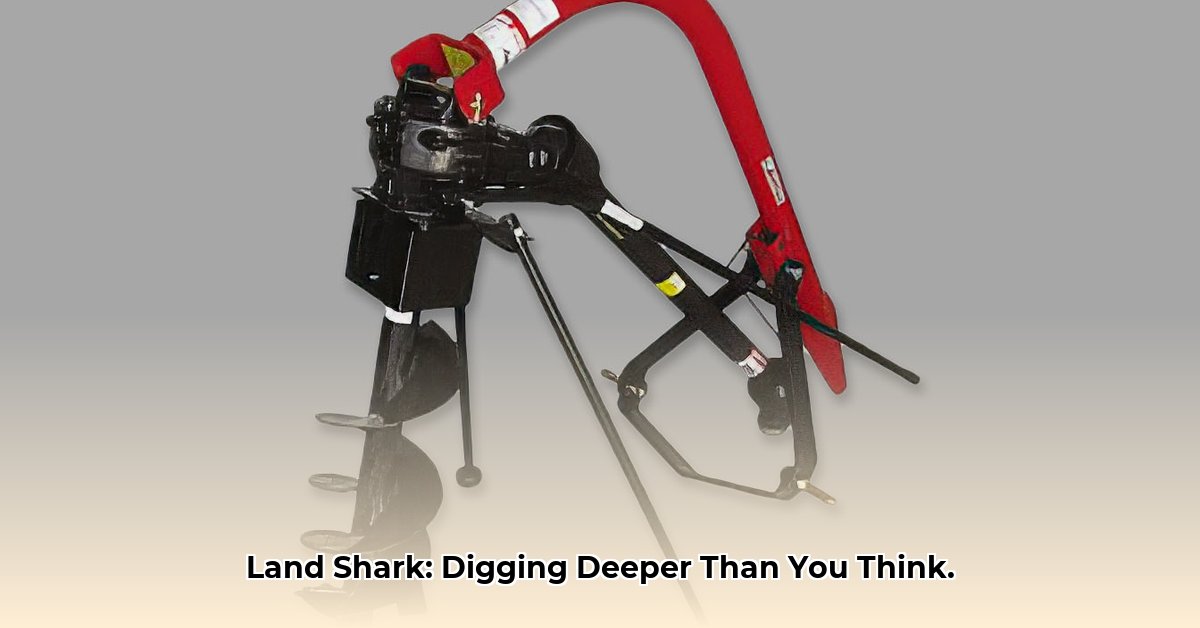
Compact Tractor Post Hole Digger: Land Shark Review – A Deep Dive
Sustainable agriculture is experiencing rapid growth, increasing the demand for efficient tools like post-hole diggers. For subcompact tractor owners, finding the right attachment is crucial for optimizing productivity. This review examines the Land Shark post-hole digger, analyzing its performance, market relevance, and providing actionable insights for both manufacturers and consumers. Does the Land Shark deliver on its promise of efficient post-hole digging? Let's find out. For more tractor attachment options, check out this helpful resource.
Performance Review
Ease of Use and Installation
The Land Shark receives positive feedback for its user-friendly design. Reviewers consistently highlight the ease of installation and intuitive operation. One user commented, "The setup was incredibly intuitive," emphasizing the smooth and efficient digging process. This ease of use, coupled with the robust build quality, contributes to a positive user experience, transforming a traditionally arduous task into a manageable one. Many describe the digger as a seamless extension of their tractor, not a cumbersome add-on.
Auger Length and Depth Capabilities
A significant limitation is the Land Shark's 36-inch auger length. Several users reported difficulty digging holes deeper than this, stating the need for a longer auger. One user expressed frustration, stating, "I really needed a longer auger for my project." This limitation restricts the application of the Land Shark to shallower post-hole projects, potentially hindering broader adoption. The demand for a longer auger option, perhaps a 48-inch model, is evident.
Tractor Compatibility
While confirmed compatible with several subcompact tractor models, including the BX23s, the lack of comprehensive compatibility information is a major concern. This absence of a clear, detailed compatibility list necessitates potential buyers to independently verify compatibility with their specific tractor model. This lack of transparency might deter purchases and highlights a need for more rigorous compatibility testing and transparent communication from the manufacturer.
Market Analysis: A Growing Need in Sustainable Agriculture
The demand for efficient post-hole diggers is on the rise, especially within the burgeoning sustainable agriculture sector. Small-scale farms and environmentally conscious landowners utilize these tools for various tasks. Applications include fencing for rotational grazing, tree planting, and constructing sustainable infrastructure. The Land Shark's ease of use aligns well with this growing need, provided its limitations are addressed. The overall market shows a significant opportunity for a more versatile and comprehensive post-hole digger.
Actionable Insights and Recommendations
Based on our analysis, several key recommendations emerge for various stakeholders:
Everything Attachments (Manufacturer): Develop and offer longer auger options (48 inches or more); conduct thorough compatibility tests across a broader range of subcompact tractors; create and publish a comprehensive, readily accessible online compatibility database.
Subcompact Tractor Owners: Always verify compatibility with your specific tractor model before purchasing; investigate aftermarket auger options if needed; carefully assess the project's depth requirements before making a purchase.
Sustainable Agriculture Sector: Evaluate the Land Shark's cost-effectiveness and environmental impact in comparison to other post-hole digging methods; prioritize sustainability in equipment selection and utilization.
Conclusion: A Promising Tool with Room for Improvement
The Land Shark post-hole digger offers a user-friendly and efficient solution for digging post holes. Its ease of use and robust build quality are considerable strengths. However, the limited auger length and lack of comprehensive compatibility information are significant limitations. Addressing these issues is crucial for expanding the Land Shark's market appeal and achieving its full potential as a go-to tool for sustainable agriculture and other applications. Addressing these limitations will be key to its long-term success.